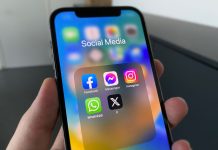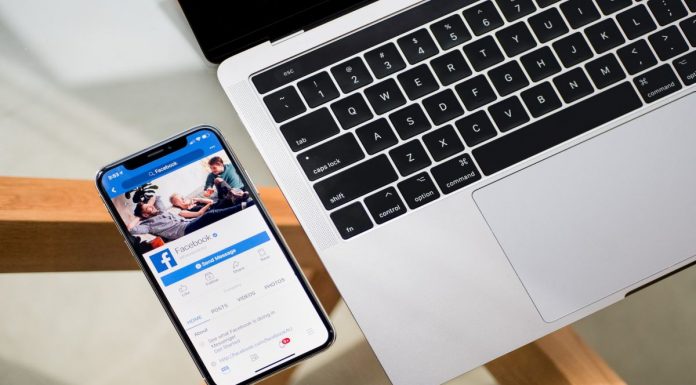I’ll bet you $100 that you won’t build a location-based application. You can’t compete with Google/Apple Maps or any other mapping apps — they are the only examples of location-based apps.
But mapping and geolocation features are now common in mobile applications, aren’t they? This blog is a great place to begin your research if you want to know On-Demand GPS App Development.
These days, location-based applications are very popular. Many mobile apps have geolocation features.
How can a location-based application benefit your business, and how do you create one?
Location-based mobile applications are for more than just people who want to locate places, people, or directions.
In a world of global connectivity, our desire to protect and ensure the well-being and safety of those we love knows no boundaries. In this world of digital connectivity and low power location tracking, these apps are beacons of comfort.
How to Build a Low-Power Location-Tracking App?
![]()
These steps will help you develop a location-based application.
So, let’s get started!
1. Examine the Market and Explore Opportunities
The first step to creating a location-based application that is successful is to explore the market. To begin, it’s important to research similar geolocation applications currently available on the market.
This information can be used to identify the gaps that your app will fill and to provide a solution for the problem you are trying to solve.
It would be best if you also did the following.
- Speak to some potential users to better understand their expectations.
- Check out the reviews for similar apps.
- Look for the market leaders.
2. Build a Unique Idea
After you have compared the services available, take the following steps:
- List the unique features of your app that will attract users and help you stand out from your competition.
- Create a special location-based application based on the ideas above.
3. Select a Reliable App Developer
The success of your app is dependent on the ability of the developer or app Development Company. Your app idea can become a reality with the right app company.
It’s essential to:
- Choose an app development firm with the appropriate expertise and a portfolio that is convincing in the field.
- Ask the developer to provide a list of the apps that they have created in the past. These apps can be downloaded to test their usability.
- The app company will not perform better than it did with the previous apps.
- Check if your app developer has experience in the platform that you want for it: Android or iOS.
- Compare the price and quality of products.
4. Choose the Right Technology Stack
Your app’s tech stack is determined by its platform, whether it be iOS, Android, or Web, and business objectives.
Add maps based on Google Maps data to your app with the help of strong>Maps SDK/strong> for strong>Android/strong> and iOS/strong>. Add maps from Google Maps to your app with MapsSDK. This SDK is available for Android and iOS.
Apple MapKit is another option to display the location of the device on the map. Both are accurate, but they differ in terms of data quality, AR, offline mapping, privacy, and routes.
GPS Tracking app development services API can be used to locate Android devices. It is low-power consumption and allows you to find the user’s location via GPS, WiFi, and Cellular networks.
Consider using other frameworks to enhance your location-based app. These include HERE, OpenStreetMap (OSM), MapBox, Foursquare API, and Facebook Places.
When choosing your app, keep in mind that GPS-based applications drain the battery quickly. Make sure that these apps are fast and reliable.
5. Determine the Functions
Geolocation apps have a number of key features.
- Map view
- User-location detection
- Route mapping
- Find places near me
- Location-based notifications
- Location History
Depending on the app’s purpose, you can add additional features. You may add a part to:
- Set the radius
- Rating and recommendations
- Share your location with contacts
- Map showing the weather forecast
- Search for sites using photos
- Traffic congestion updates in real-time
Remember to keep your initial app’s features as simple as possible. It’s best to build an MVP before you launch your app, as it is a low-risk way to test out your idea.
6. Create UX & UI
Create a visual model of your app.
Work out how your app will appear and what screens it will include. The design of your app should be intuitive and clean. Your idea will be validated.
7. App Secure
It is important to give priority to the security of your app as data regulations are becoming stricter. In this step, the app is tested for data security and compliance.
It would be best if you considered that the data of your users is one of your most valuable assets. Therefore, you must ensure that you follow proper procedures to collect, store, and manage this data. You must:
- Make sure your GPS app is secure by focusing on data security.
- You can lose your data if you accidentally delete files or folders. You will need data recovery software in this situation.
- Make sure that you adhere to the local regulations of the countries where you plan to market your app.
8. Develop and Test
This is where the back-end coding takes place. The back-end code is done here. A thorough testing process helps to remove bugs and ensure the quality of code.
Your app will be ready to launch once you have completed all the above steps.
8 Considerations When Creating a Low Power Location Tracking App

When developing a mobile low power location tracking app, there are several important aspects to take into consideration:
1. Real-Time Definition: What does it Mean?
Although the term “real-time” is used often, it does not mean that updates are made in real-time. Instead, they are done at regular intervals. Specificity is a consideration that should be made in every software development process.
In our algorithm, the location of the user was updated every 180 seconds if they were moving and every 900 seconds if they were stationary.
2. Create your Code to Handle Server Communication and Location Tracking
Even if the code is widely used, it shouldn’t be relied upon when dealing with specific performance requirements or very specific requirements.
We’ve seen 3rd-party code that was reputable behave in unexpected or small ways and improperly document issues. Another issue is that third-party software feels uncomfortable changing specifications.
3. Learn How the Hardware Works. Turn off the Hardware
When we first started working on the module for location tracking, we polled every 30 seconds. The GPS/location-tracking hardware was consuming a lot of power during our tests.
We found that after a few tests, the hardware related to location tracking was still powered on 30 seconds after it had been turned off. We polled every 30 seconds, so the hardware connected to location tracking was always ON.
4. Understanding How Network Hardware Works
The network hardware had the same problem as the location-tracking equipment. It was mainly an issue with cellular data hardware that would stay powered ON even after we stopped using it.
In order to achieve our goals, we implemented an in-memory cache. We performed synchronizations of the server at specified time intervals.
5. Implement a Detection Algorithm for Stationary Mode and Refresh the Location with Longer Intervals
In order to achieve our goals, we are determined to track the user at longer intervals. At the same time, they are stationary and would reduce battery consumption.
We used motion detection hardware to determine whether or not the user was moving. We only tracked the location of a user who was stationary every 900 seconds.
6. Set the Accuracy Target for Location Tracking
We tried using cell towers and WiFi tracking at first. Still, they needed to give us the accuracy we needed (the accuracy target was 100 meters).
Another issue was that some users might use the app in remote areas with low or no WiFi coverage. Both the ability to accurately find the user, as well as the desire to reduce battery consumption required setting a threshold.
7. Simple Server Communication Protocols
Avoid using HTTP to communicate with online services. HTTP has a high overhead. We tested custom socket implementations as well as AMQP. AMQP was used when necessary because it consumed less battery power than the custom socket implementation.
8. Disk Writers also Consume Batteries
In our quest to achieve 0.3% battery consumption per minute while tracking the user continuously, we also encountered unexpected disk writes. In our tests, we found that the in-memory cache provided the best results.
Conclusion
Low-power location tracking is an important step to modernize our navigation, safety, and convenience. We’ve seen that GPS tracking app Development Company is key to the future of location-based services.
It is impossible to overstate the importance of low-power devices. These solutions not only increase the battery life but also reduce energy consumption. This technological advancement has allowed us to develop location-tracking applications that are cost-effective and eco-friendly.
The expertise of GPS app developers is a crucial part of this journey. They are responsible for the smooth operation of location-tracking apps. They ensure that they are accurate and responsive.
The demand for GPS tracking apps is increasing, and it’s becoming more important to hire GPS tracking app developers with the necessary skills and experience to meet the changing needs of individuals and businesses.
Read Also:
- 50 Best Technology Blogs That Accept Guest Posts
- A Guide To The Pros & Cons Of Direct Deposits & Wire Transfers
- Driverless Technology: What The Future Holds
Author: Kritika Sharma
























